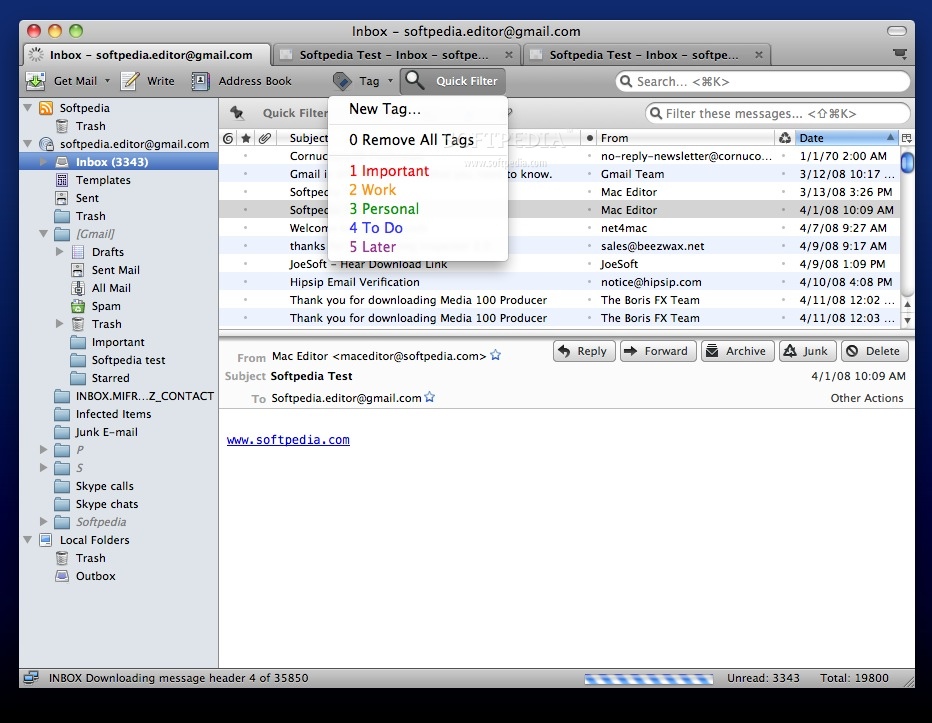
- THUNDERBIRD FOR MAC DOES NOT LIST OUTLLOOK FOR IMPORT DOWNLOAD
- THUNDERBIRD FOR MAC DOES NOT LIST OUTLLOOK FOR IMPORT WINDOWS
Set objOutlook = CreateObject("Outlook.Application") Set WShell = CreateObject("WScript.Shell") As said before, Outlook needs to open these message visually and changing focus will interrupt the script Simply wait for the “Import completed.” dialog.ĭim objShell : Set objShell = CreateObject("Shell.Application")ĭim objFolder : Set objFolder = objShell.BrowseForFolder(0, "Select the folder containing eml-files", 0) Important! Once you’ve selected the folder, do not provide any further input via your mouse, keyboard, touch, pen, or any other method. It is usually the one that you viewed last.
THUNDERBIRD FOR MAC DOES NOT LIST OUTLLOOK FOR IMPORT WINDOWS
When it does, select Outlook on the Task Bar and, if needed, cycle through your open Outlook windows to find it. The Outlook folder selection dialog may load in the background. Select the Outlook folder you want to import the eml-files into. Select the folder containing the eml-files that you want to import. Open or extract the zip-file and double click on import-eml.vbs.
THUNDERBIRD FOR MAC DOES NOT LIST OUTLLOOK FOR IMPORT DOWNLOAD

This method is relatively slow since Outlook can only do something with the eml-message once it has been opened visually. The native import script uses the built-in Windows and Outlook scripting capabilities to open each eml-file and move it into a folder of your choice. Once the message is open, you can use the “Save” button to store it in the Inbox folder or the “Move” command to save it to the folder of your choice Įven eml-files from Outlook Express can be opened and saved in Outlook.
If it doesn’t open with Outlook, set Outlook as the default handler for eml-files. If you only need to import a single eml-file, then you can simply double click on the eml-file to open it with Outlook. This guides contains instructions and 2 scripts to import eml-files into an Outlook folder of your choice. While Outlook does support opening eml-files, it doesn’t offer a way to import them into Outlook. If you’ve ever used Outlook Express, Windows (Live) Mail, Thunderbird, Lotus/IBM Notes or basically any mail client other then Outlook, chances are that you have some eml-files stored somewhere as well.


 0 kommentar(er)
0 kommentar(er)
